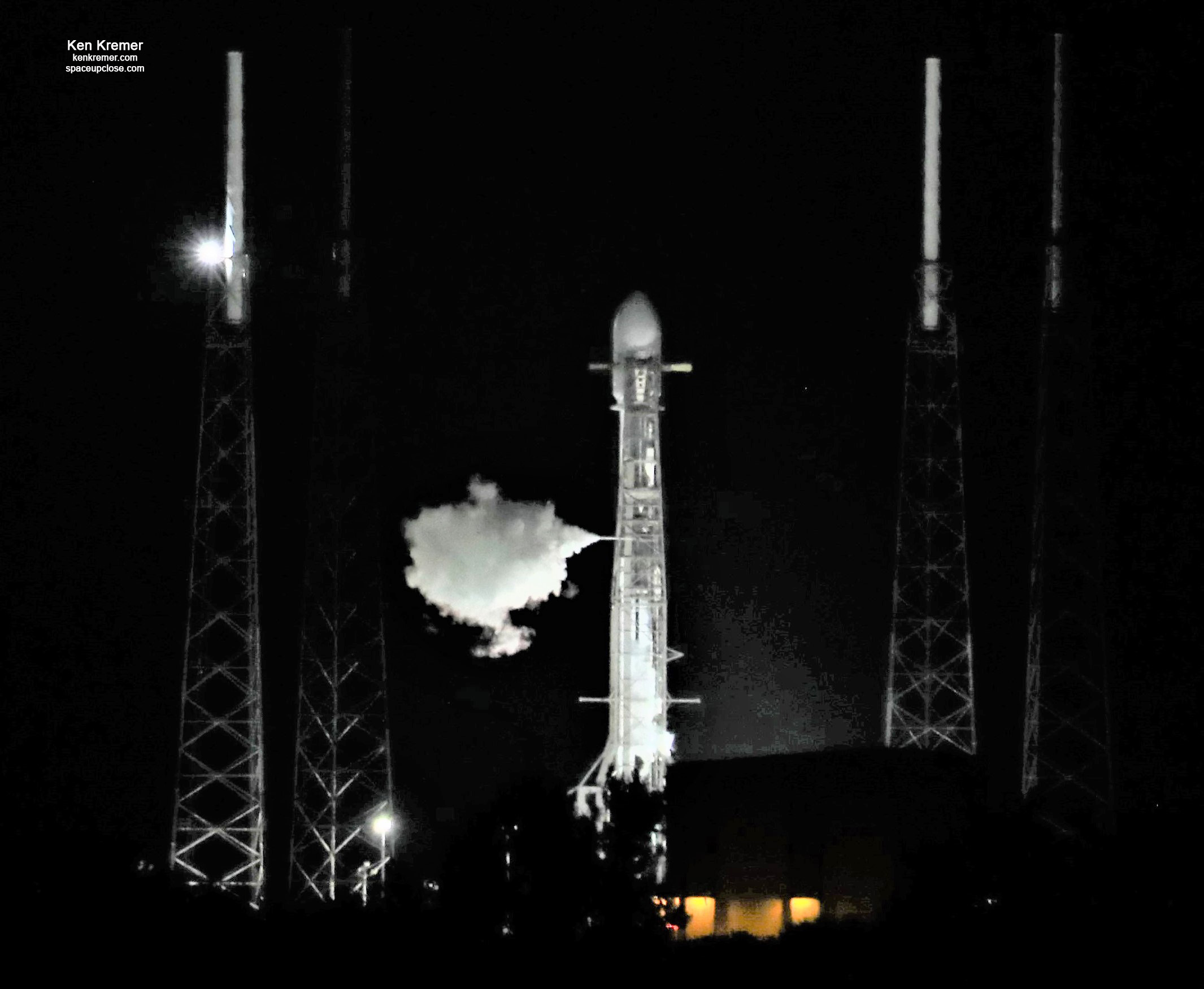
For SpaceUpClose.com & RocketSTEM
CAPE CANAVERAL SPACE FORCE STATION, FL – It was just not to be. Space Coast ‘Scrubitis’ continues !
Continuing an unlucky string, 4 in a row launch scrubs happened this week on the Florida Space Coast by America’s premier rocket builders SpaceX and United Launch Alliance (ULA) as yet another SpaceX Falcon 9 rocket aborted liftoff just moments before planned ignition Friday evening Oct. 2 of the mission carrying the newest GPS III series navigation satellite for the U.S. military and the Space Force to orbit – because of technical issues with the commercial rocket despite weather conditions that fortunately turned favorable amidst a week of poor weather.
The Falcon 9 GPS satellite liftoff was suddenly and unexpectedly automatically aborted at T Minus 2 seconds during the terminal countdown and live broadcast and comes on the heels of repeated launch scrubs and postponements for both technical and weather issues this past month for both SpaceX and ULA.
“Standing down from tonight’s launch attempt of GPS III-4,” SpaceX announced and tweeted.
And the CEO’s of both companies namely SpaceX CEO Elon Musk and ULA CEO Tory Bruno plan to fully investigate what is going on and causing most of these scrubs.
Musk himself acknowledges it will take a lot of hard work and changes in operating procedures to achieve the goal of 48 launches per year outlines by the 45th Space Wing at Cape Canaveral Space Force Station.
We will need to make a lot of improvements to have a chance of completing 48 launches next year!
— Elon Musk (@elonmusk) October 3, 2020
Elon Musk is personally heading to the Cape next week to review the situation with his team and inspect the hardware in person.
“All of that and more. We’re doing a broad review of launch site, propulsion, structures, avionics, range & regulatory constraints this weekend. I will also be at the Cape next week to review hardware in person,” SpaceX CEO Elon Musk tweeted in response to questions about the launch cadence and scrubs.
All of that and more. We’re doing a broad review of launch site, propulsion, structures, avionics, range & regulatory constraints this weekend. I will also be at the Cape next week to review hardware in person.
— Elon Musk (@elonmusk) October 3, 2020
Although we have no control of the weather, the firms do have plenty of control over the manufacturing and the maintenance of the rockets hardware and software and all launch pad ground systems and infrastructure.
Musk attributed the abort to “unexpected rise in turbo machinery gas generator.”
Unexpected pressure rise in the turbomachinery gas generator
— Elon Musk (@elonmusk) October 3, 2020
The gas generator is part of the hardware inside the first stage Merlin 1 D engines
The Falcon 9 scrub came just about 30 minutes after the scrub curse was briefly broken by the successful launch of the Northrop Grumman Antares rocket at 9:16 p.m. ET from NASA Wallops on a mission carrying the Cygnus cargo resupply ship loaded with 4 tons of science and supplies to the ISS.
The Global Positioning System (GPS) III satellite, Space Vehicle 04 (SV04) was encapsulated in the nose cone bolted atop the brand new Falcon 9 rocket had been rolled out and raised into launch position at Cape Canaveral’s Space Launch Complex-40.
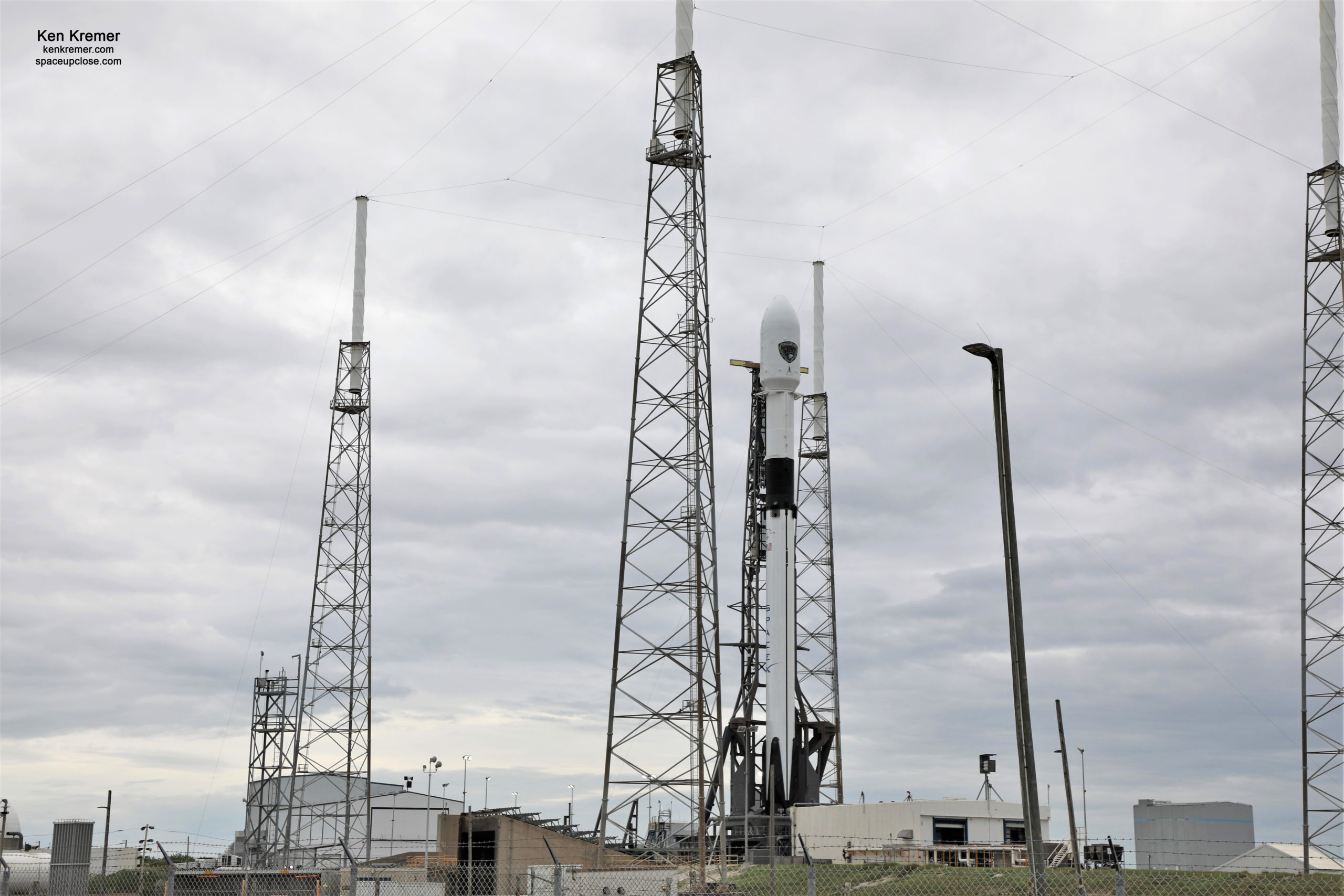
SpaceX had been scheduled to launch the fourth in a series of next generation GPS satellites on a newly manufactured Falcon 9 on Friday evening Oct. 2 at 9:43 p.m. EDT from Space Launch Complex-40 on Cape Canaveral Space Force Station, FL.
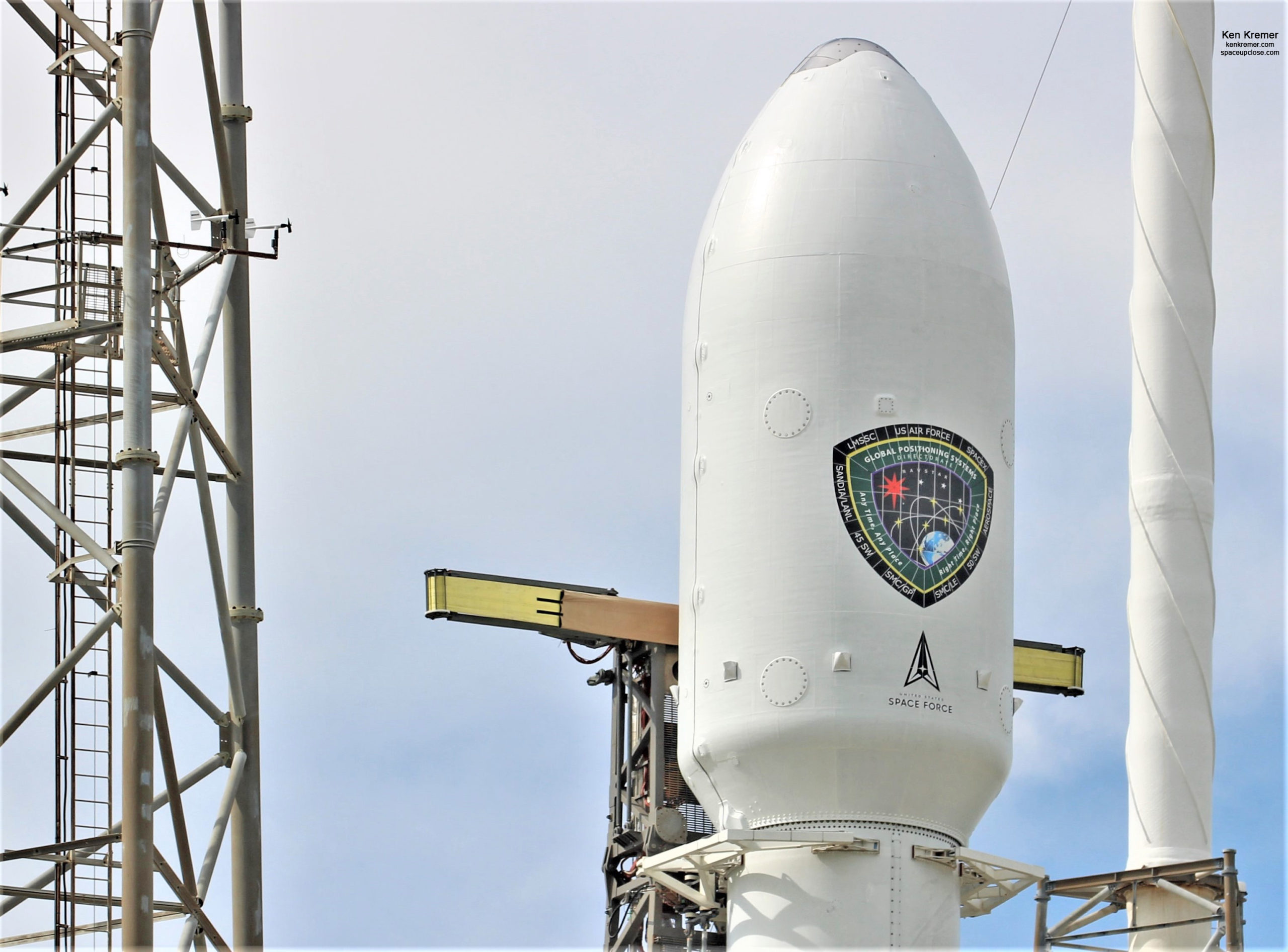
The launch window for the GPSIII SV04 mission for the U.S. Space Force extended 15 minutes until 9:58 p.m. ET.
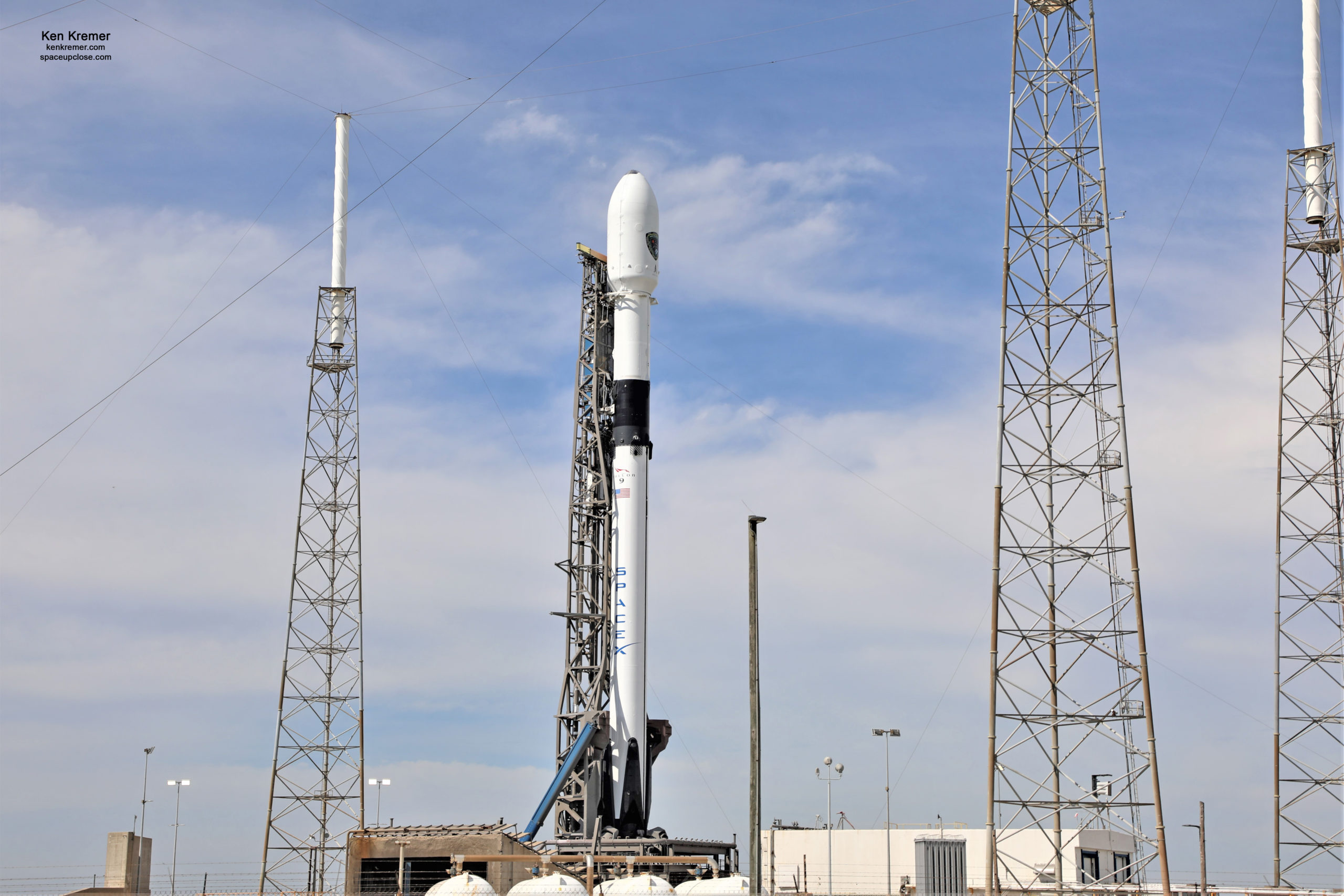
But there simply was insufficient time to recycle the Falcon 9, determine the cause of the abort and try again.
In fact SpaceX this week had planned to launch two Falcon 9 rockets from 2 different launch pads and both were halted in the final seconds by technical problems with the rocket and ground systems.
All told in there are 3 rockets vertical at 3 launch pads this week simultaneously at pads 39A, 40 and 37 involving two single stick SpaceX Falcon 9s and one triple stick ULA Delta IV Heavy.
Enjoy our Space UpClose gallery of images from the pad and the launch attempts on base from the team of Ken Kremer and Jean Wright.
Torrential rains, lightning and thunderstorms inundated Central Florida periodically over the weekend and this week as the multiple storm fronts moved in and out.
With all systems seemingly ‘GO’ ULA was counting down until an automatic scrub was called at T Minus 7 seconds in the dead of night because of a ‘sensor issue’ detected by by terminal countdown sequencer rack TCSR at 11:54 p.m. EDT (0358 GMT) Tuesday, Sept. 30, 2020 from seaside Space Launch Complex-37 at Cape Canaveral Air Force Station, Florida
“The launch of a ULA #DeltaIVHeavy carrying the #NROL44 mission for the @NatReconOfc was scrubbed today when the terminal countdown sequencer rack (TCSR) identified an unexpected condition prior to the engine start sequence,” ULA tweeted.
“The TCSR, which controls the final 10 seconds of the countdown, performed as intended and safely initiated a hold at T-minus seven seconds. The team is currently reviewing all data and will determine the path forward.”
The launch of a ULA #DeltaIVHeavy carrying the #NROL44 mission for the @NatReconOfc was scrubbed today when the terminal countdown sequencer rack (TCSR) identified an unexpected condition prior to the engine start sequence.
— ULA (@ulalaunch) October 1, 2020
A new Delta launch target date is TBD.
Likewise a new date for GPS has yet to be announced.
A few hours after the Delta IV Heavy scrub the other Falcon 9 for the 13th Starlink mission scrubbed 9 hours later in daylight on Oct. 1 when the scene repeated.
With all seemingly GO and the rocket venting LOX SpaceX was counting down until an automatic scrub was called at T Minus 18 seconds – due to a faulty sensor reading.
“Standing down from today’s Starlink mission due to an out of family ground system sensor reading; will announce a new target launch date once confirmed on the Range,” SpaceX tweeted.
Standing down from today's Starlink mission due to an out of family ground system sensor reading; will announce a new target launch date once confirmed on the Range
— SpaceX (@SpaceX) October 1, 2020
A new launch target date is tentatively set for Monday morning, Oct 5 at 7:51 a.m. ET
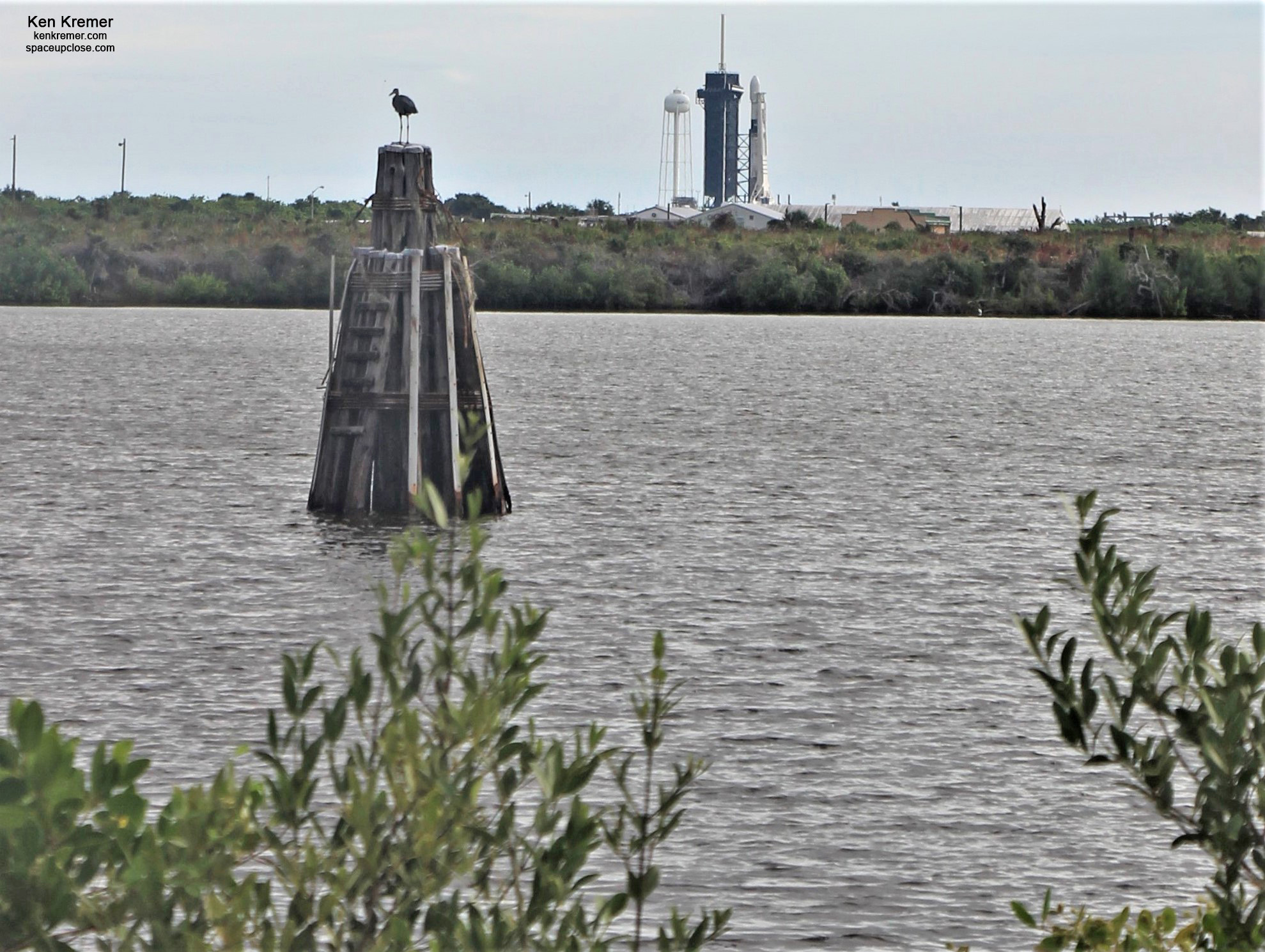
Liftoff of the 23 story tall single stick recycled SpaceX Falcon 9 on the 13th mission carrying Starlink broadband internet satellites had been slated for 9:17 a.m. EDT Thursday morning, Oct. 1 from Launch Complex-39A on NASA’s Kennedy Space Center.
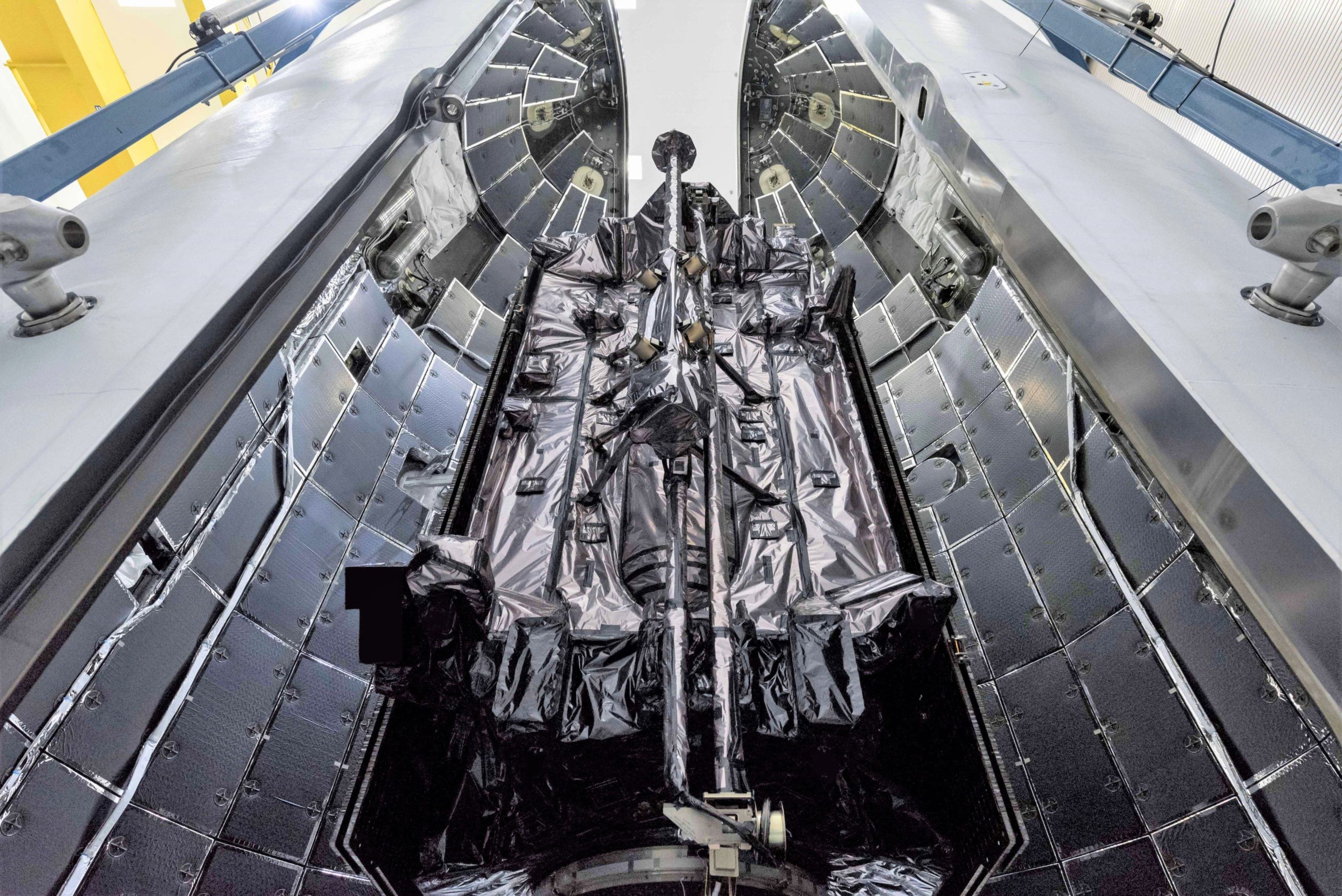
“GPS III SV04 will join the current 31-satellite operational constellation to continue to provide the gold standard in positioning, navigation, and timing services for more than four billion users worldwide,” says the U.S. Space and Missile Command.
Military leaders announced that the U.S. Space Force will now permit use of ‘flight-proven’ Falcon 9 rocket for military launches following a thorough evaluation and verification of all rocket systems with SpaceX.
This 1st stage GPS booster will be recovered on the sea going droneship, returned to Port Canaveral and reflown on the next GPS III launch of the SV05 satellite next summer, Dr Walter Lauderdale of the Space and Missile Systems directorate told me during a Sept. 25, 2020 media briefing.
At that briefing SpaceX acknowledged that the repeated launch attempts and scrubs can take a toll.
“I’d be lying if I were to tell you that it isn’t sometimes stressful, but up to this point, we have two pads,” said Michael Ellis, director of SpaceX’s national security space launch division, at the media briefing. “We have teams dedicated to support simultaneous operations and we’re able to, with our partnership, work hand-in-hand with the Space Force
“These things happen. We’re quite used to the bullwhip effect of new information coming. We’re able to handle it because we have such a strong partnership [with the range] and the communication is transparent.”
Just seconds before liftoff the countdowns were aborted first for a ULA Delta IV Heavy at Cape Canaveral Space Force Station just before midnight Sept 30 and then second for a SpaceX Falcon 9 at the Kennedy Space Center a few miles north at breakfast time on Thursday morning, October 1.
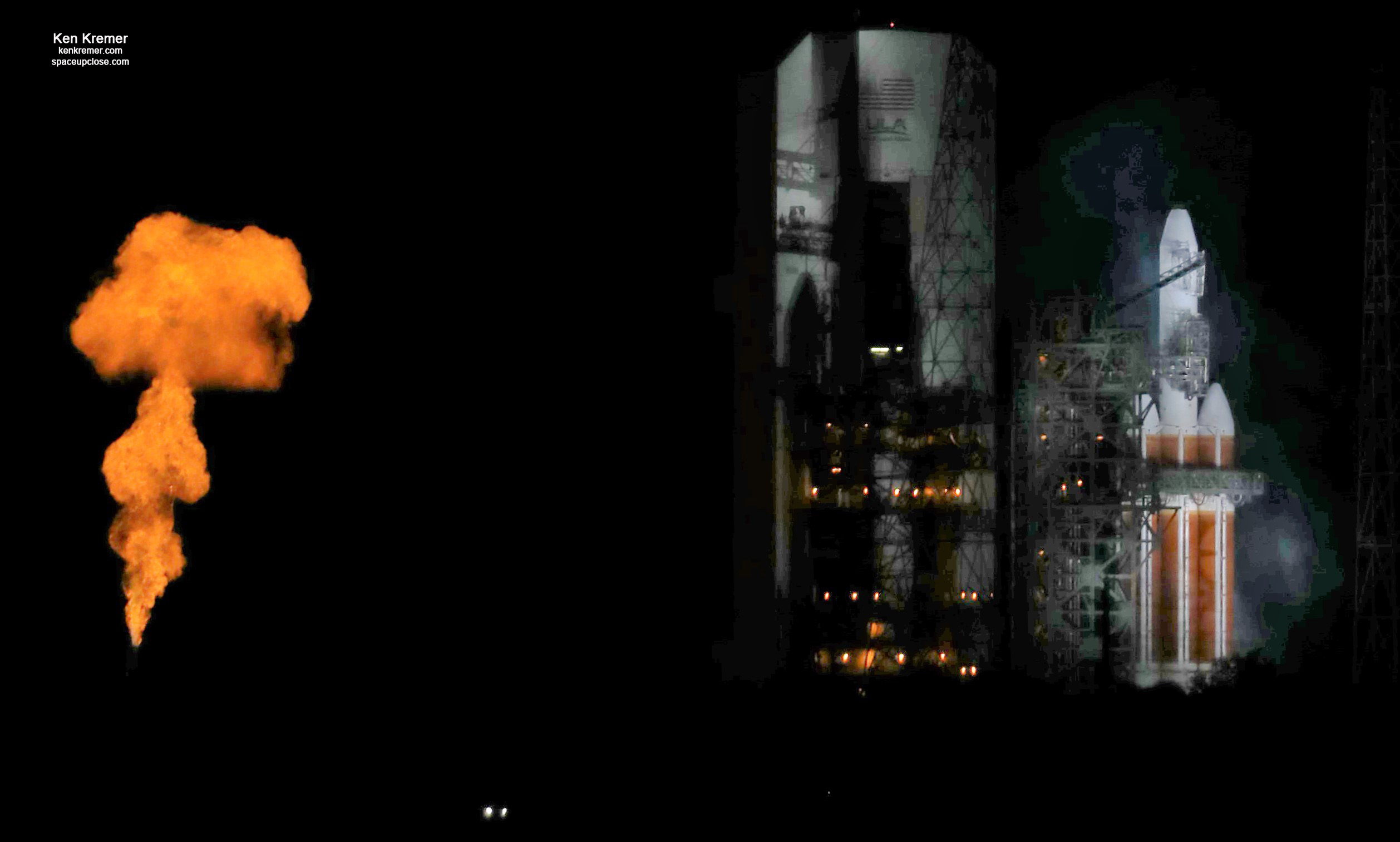
Liftoff of the 23-story tall triple stick United Launch Alliance (ULA) Delta IV Heavy rocket on the NROL-44 intelligence gathering mission for the National Reconnaissance Office (NRO) had been re-slated for 11:54 p.m. EDT (0358 GMT) Tuesday, Sept. 30, 2020 from seaside Space Launch Complex-37 at Cape Canaveral Air Force Station, Florida – following the earlier scrubs for the hot fire abort and faulty ground launch pneumatic systems and the swing arm problem as well as weather.

Both the NROL 44 and GPS satellite launches are for the US military
GPS III SV 04 has three times more accuracy and up to eight times improved anti-jamming capability vs the currently orbiting GPS constellation in the earlier GPS II series. A vast improvement for both military and civilian users of GPS.
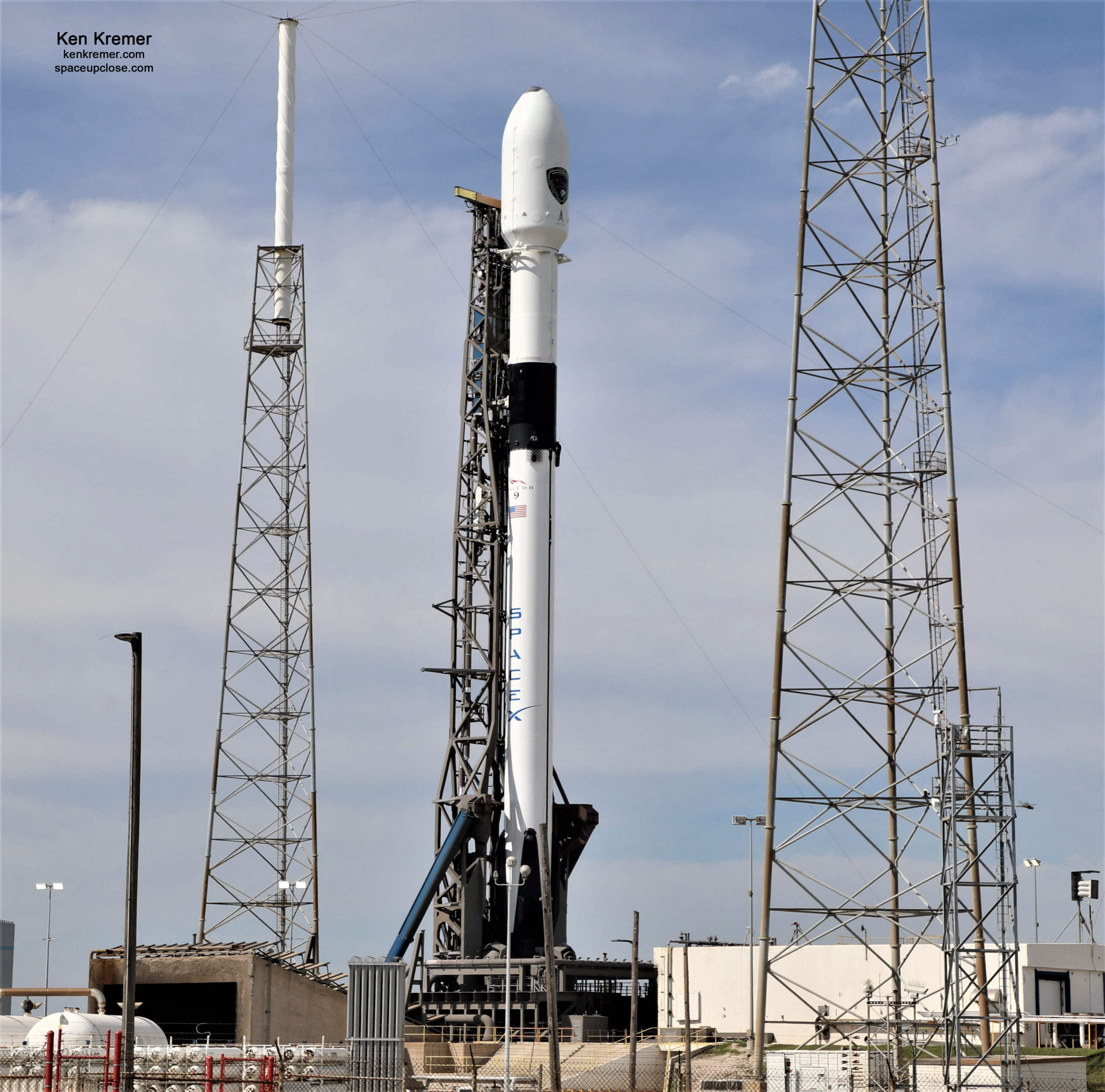
The GPS III series is built by prime contractor Lockheed Martin.
SpaceX will attempt to recover both Falcon 9 boosters on their 2 droneships: Of Course I Still Love You & Just Read The Instructions
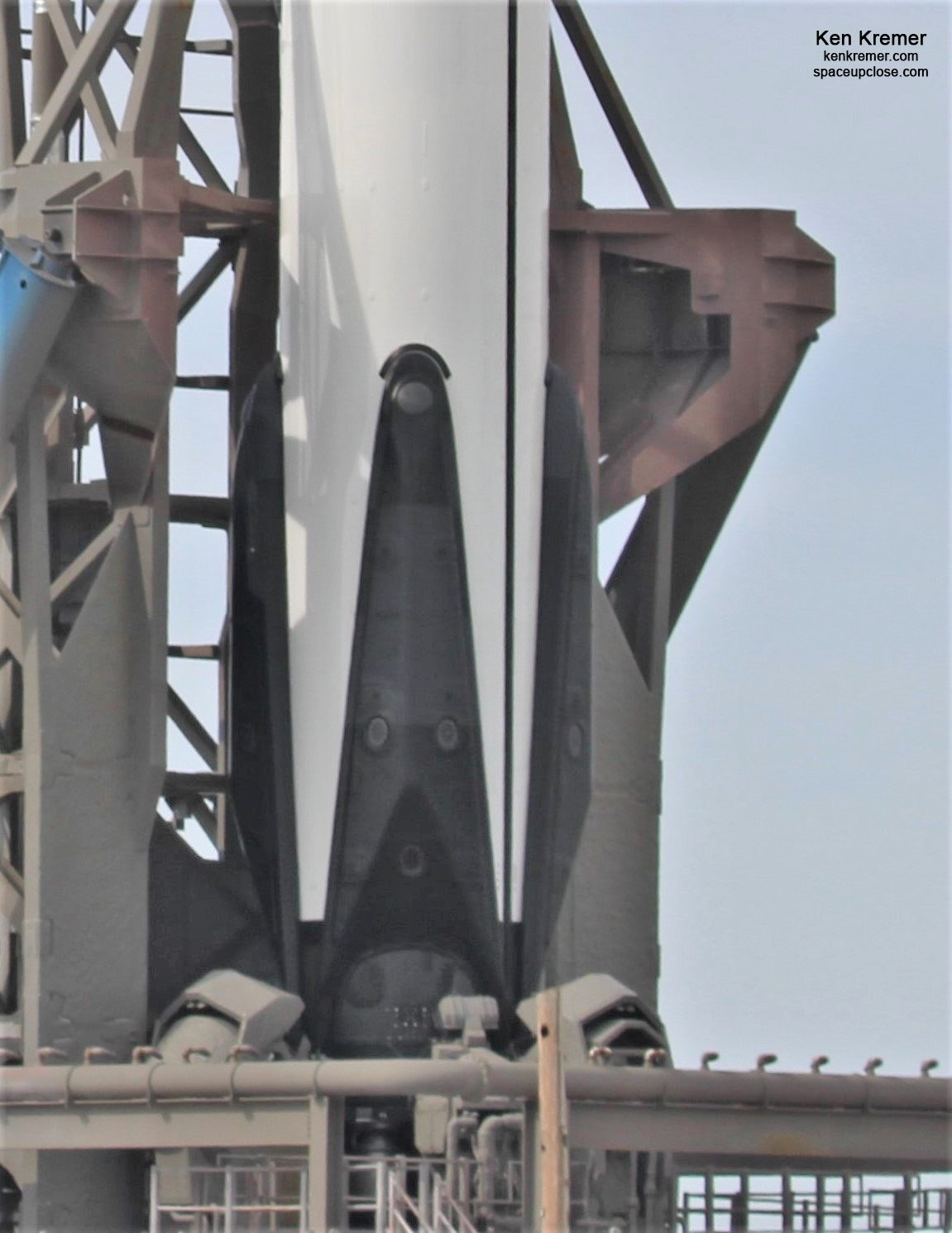
Watch my post scrub commentary at Fox 35 News Orlando on Oct. 3:
https://www.fox35orlando.com/video/857194
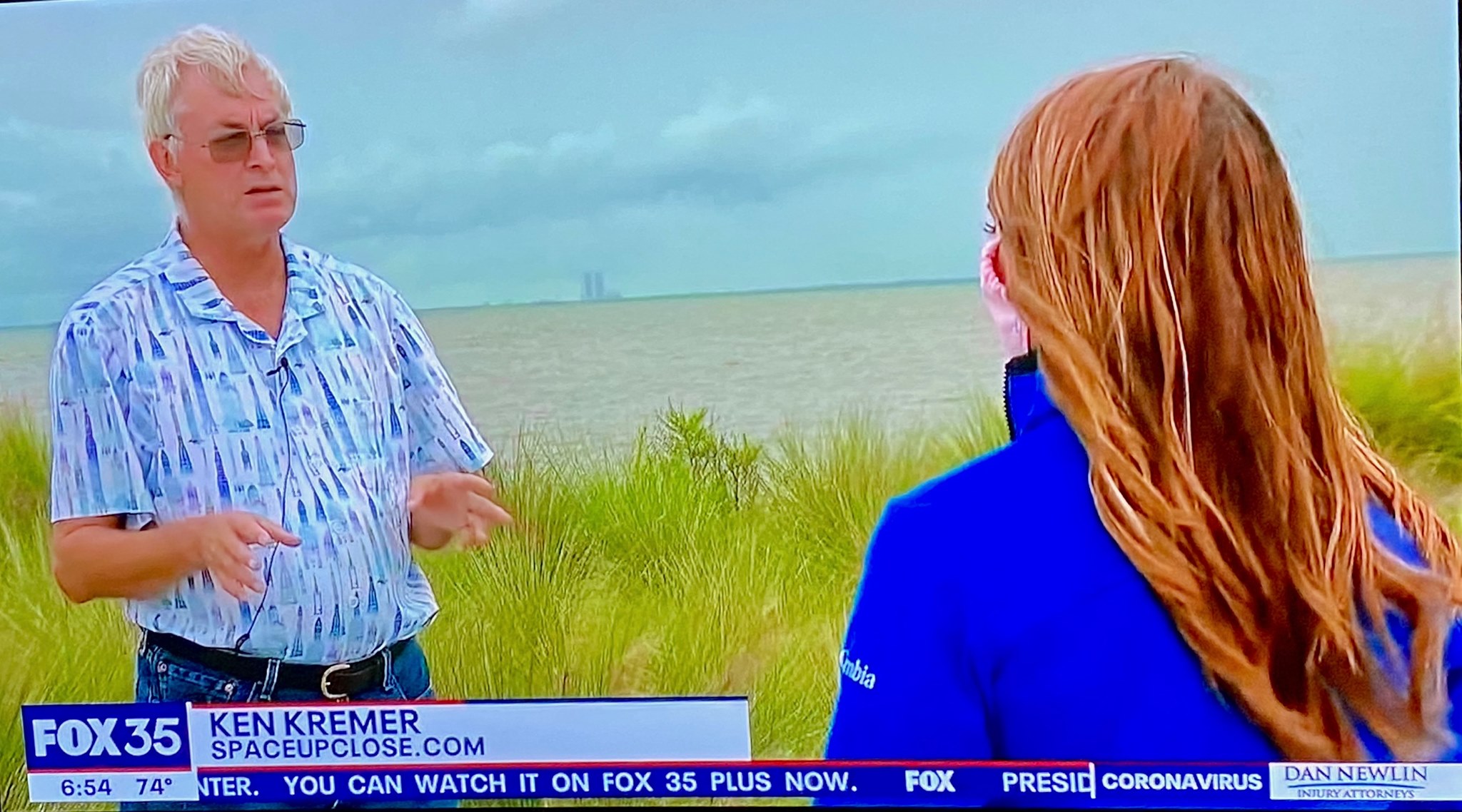
“They need to stand back. They need to rethink. They need to look at all of their procedures and that’s why Musk is coming here for. He’s going to do a thorough review,” I explained to Fox 35 about the many SpaceX launch scrubs.
“We hope the weather is good, but we have no control over the weather. But they have plenty of control over the rocket and the pad to make sure they’re in order.”
Watch my commentary at WFTV Channel 9 ABC TV News Orlando in this Sept. 25/26 report about 3 upcoming Space Coast launches in 3 days by ULA and SpaceX.
Also Fox 35 TV News Orlando on Sep 28/29 about the impact of scheduling so many back to back launches and impact of repeated launch scrubs.
Watch my live interview discussion of current space missions and launches on Sept. 18 edition of ‘Stay Curious’ daily space show presented by the American Space Museum, Titusville, FL.
https://www.facebook.com/175507880819/videos/1058636561206413
Watch Ken’s continuing reports about Starlink, Commercial Crew and Artemis and onsite for live reporting of upcoming and recent SpaceX and ULA launches including Demo-2, Starlink, X-37B, Solar Orbiter, Mars 2020 and more at the Kennedy Space Center and Cape Canaveral Space Force Station.
Stay tuned here for Ken’s continuing Earth and Planetary science and human spaceflight news: www.kenkremer.com –www.spaceupclose.com – twitter @ken_kremer – email: ken at kenkremer.com
Dr. Kremer is a research scientist and journalist based in the KSC area, active in outreach and interviewed regularly on TV and radio about space topics.
………….
Ken’s photos are for sale and he is available for lectures and outreach events
Please consider supporting Ken’s work by donating at Patreon:
https://www.patreon.com/kenkremer
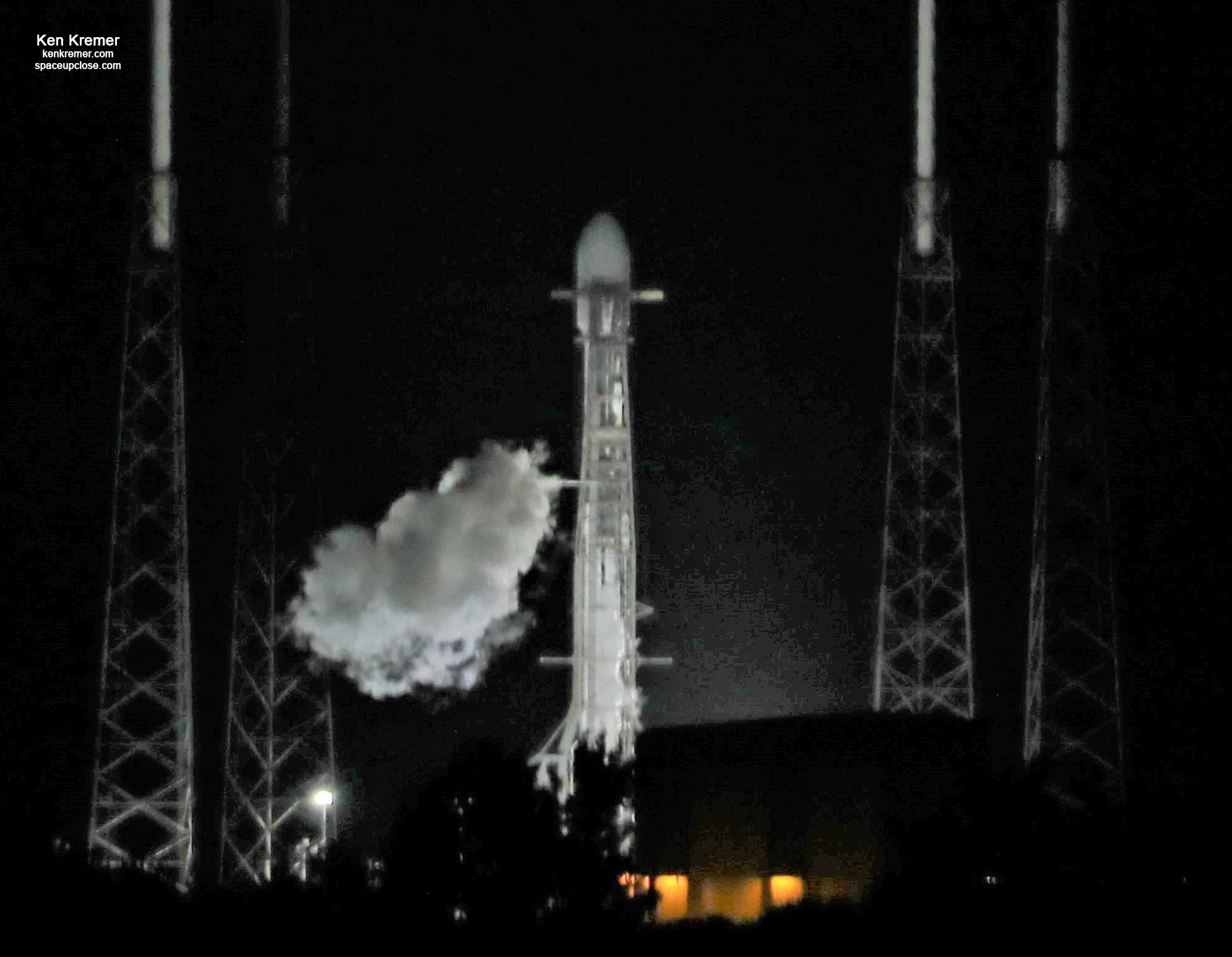

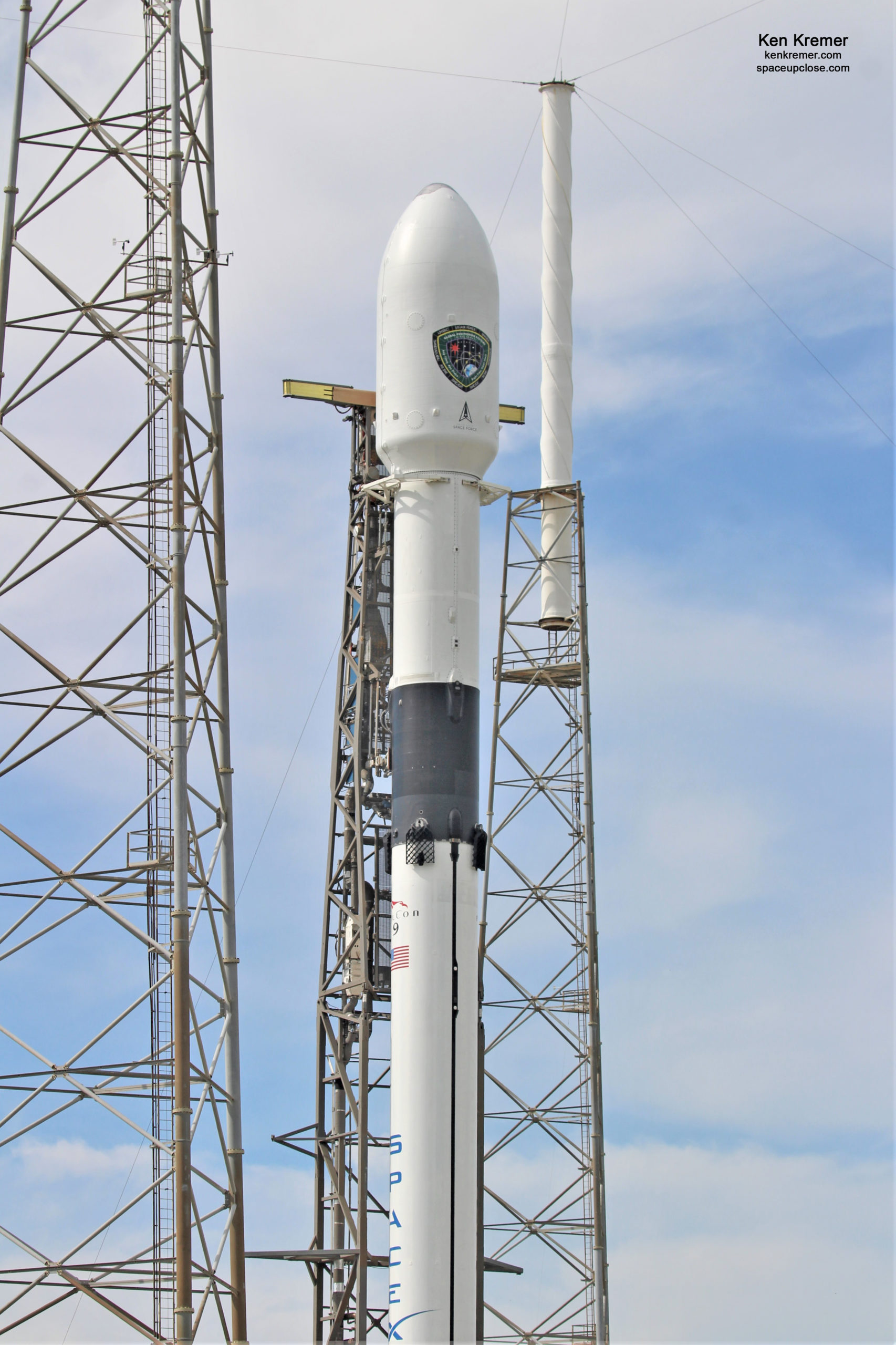
x



